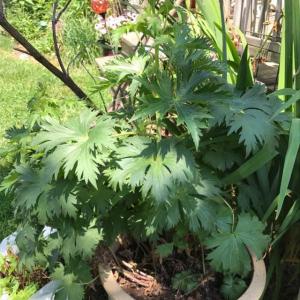文章
Dummer. ゛☀
2017年08月05日

BOTANICAL NAME: Delphinium
PLANT TYPE: Flower
SUN EXPOSURE: Full SunPart Sun
SOIL TYPE: Loamy
SOIL PH: Alkaline/Basic
FLOWER COLOR: BluePinkPurpleWhite
BLOOM TIME: Summer
SPECIAL FEATURES: Attracts Butterflies
Delphiniums are perennials grown for their showy spikes of colorful summer flowers in gorgeous shades of blue, pink, white, and purple. They are popular in cottage-style gardens and cutting gardens.
Delphiniums are a favorite of many gardeners, but can sometimes be a challenge. They prefer moist, cool summers and do not fare well in hot, dry weather. The plants also dislike sudden wind or rain.
Except for the dwarf perennials, most delphiniums need staking.
PLANTING
Grow in fertile, well-drained soil in full sun to light shade, with shelter from strong winds.
Plant in the spring. Prepare the soil, mixing in 2 to 4 inches of compost.
Delphinium is a genus consisting of over 300 species—some are annuals, others are biennials or perennials. Some grow easily from seed, others don’t.
Dig a hole twice the diameter of the plant’s container. When planting, ensure that the top of the root ball is level with the soil.
In the spring, broadcast lime, wood ashes, or a mixture of the two over this alkaline-loving perennial. Learn more about soil amendments.
CARE
Insert supports no later than midspring or when the plants reach 12 inches high. Stake the low-growing perennials with twiggy, brushwood support. The taller, large-flowered delphiniums need sturdy stakes.
Soil should not dry out. Water plants during the summer if rainfall is less than 1 inch per week.
For good-quality flower spikes, thin shoots when 3 inches high; leave a minimum of 2 or 3 shoots on young plants, and 5 to 7 shoots on well-established ones.
In growth, water all plants freely, applying a balanced liquid fertilizer every 2 to 3 weeks.
Deadhead by cutting spent flower spikes back to small, flowering side shoots.
After delphiniums have finished blooming, cut flower stalks to the ground, and new, though smaller, flower stalks will develop. The flowers will survive the coming cold days and even light frosts. (See local frost dates.)
If delphiniums need to be divided in the spring, remove and replant the new little plants growing around the outside of the clump. Discard the hard old heart.
PESTS/DISEASES
Susceptible to slugs and snails as well as cyclamen mites.
Powdery mildew, Southern blight, bacterial and fungal spots, gray mold, crown and root rot, white rot, rust, white smut, leaf smut, and damping off occur.
PLANT TYPE: Flower
SUN EXPOSURE: Full SunPart Sun
SOIL TYPE: Loamy
SOIL PH: Alkaline/Basic
FLOWER COLOR: BluePinkPurpleWhite
BLOOM TIME: Summer
SPECIAL FEATURES: Attracts Butterflies
Delphiniums are perennials grown for their showy spikes of colorful summer flowers in gorgeous shades of blue, pink, white, and purple. They are popular in cottage-style gardens and cutting gardens.
Delphiniums are a favorite of many gardeners, but can sometimes be a challenge. They prefer moist, cool summers and do not fare well in hot, dry weather. The plants also dislike sudden wind or rain.

Except for the dwarf perennials, most delphiniums need staking.
PLANTING
Grow in fertile, well-drained soil in full sun to light shade, with shelter from strong winds.
Plant in the spring. Prepare the soil, mixing in 2 to 4 inches of compost.
Delphinium is a genus consisting of over 300 species—some are annuals, others are biennials or perennials. Some grow easily from seed, others don’t.
Dig a hole twice the diameter of the plant’s container. When planting, ensure that the top of the root ball is level with the soil.
In the spring, broadcast lime, wood ashes, or a mixture of the two over this alkaline-loving perennial. Learn more about soil amendments.

CARE
Insert supports no later than midspring or when the plants reach 12 inches high. Stake the low-growing perennials with twiggy, brushwood support. The taller, large-flowered delphiniums need sturdy stakes.
Soil should not dry out. Water plants during the summer if rainfall is less than 1 inch per week.
For good-quality flower spikes, thin shoots when 3 inches high; leave a minimum of 2 or 3 shoots on young plants, and 5 to 7 shoots on well-established ones.
In growth, water all plants freely, applying a balanced liquid fertilizer every 2 to 3 weeks.
Deadhead by cutting spent flower spikes back to small, flowering side shoots.
After delphiniums have finished blooming, cut flower stalks to the ground, and new, though smaller, flower stalks will develop. The flowers will survive the coming cold days and even light frosts. (See local frost dates.)
If delphiniums need to be divided in the spring, remove and replant the new little plants growing around the outside of the clump. Discard the hard old heart.

PESTS/DISEASES
Susceptible to slugs and snails as well as cyclamen mites.
Powdery mildew, Southern blight, bacterial and fungal spots, gray mold, crown and root rot, white rot, rust, white smut, leaf smut, and damping off occur.
0
0
成长记
Judikay
2017年06月16日

I new added a "Delphinium, Massive - moving to south side after flowered" in my "garden"


0
0









